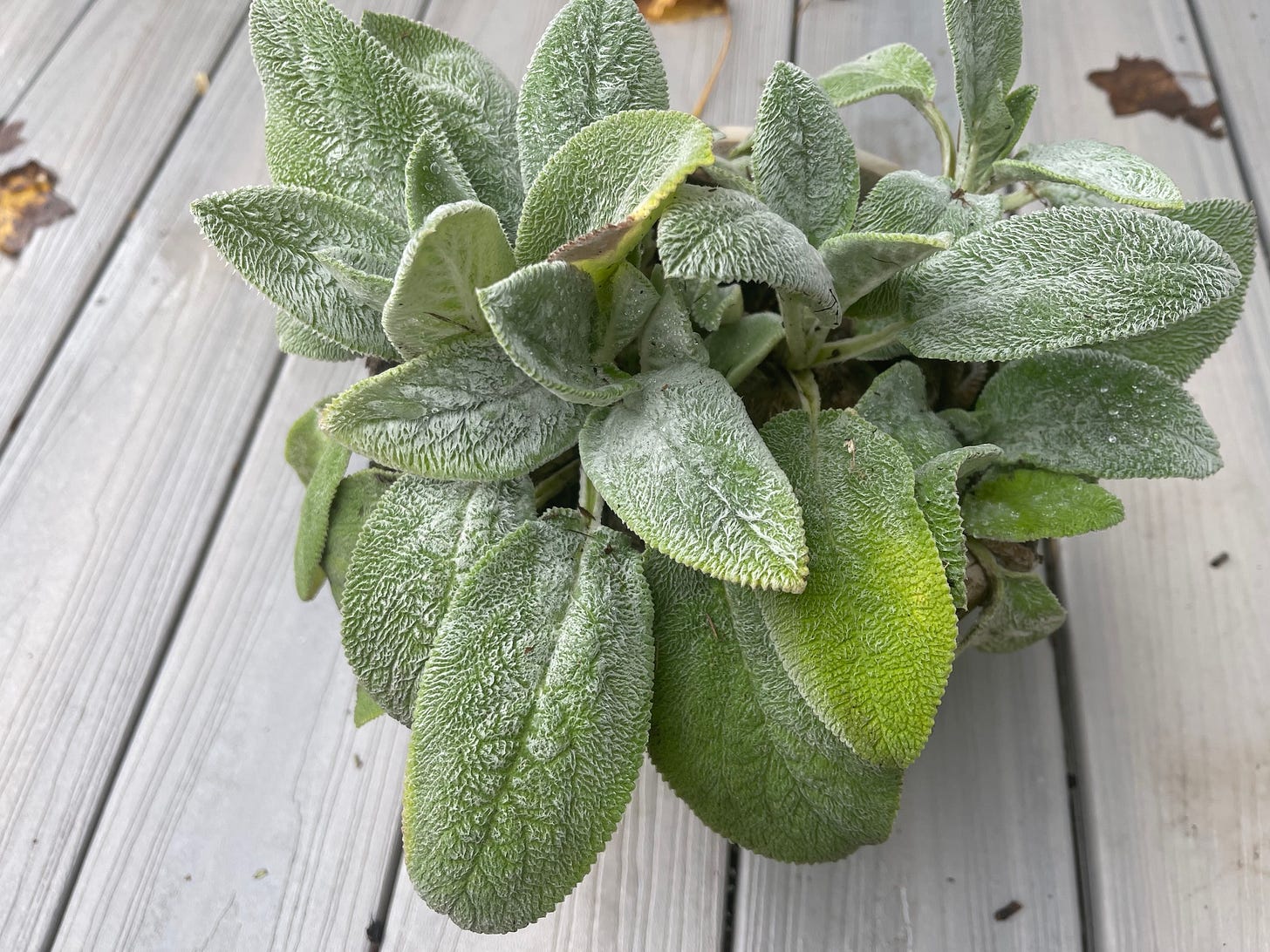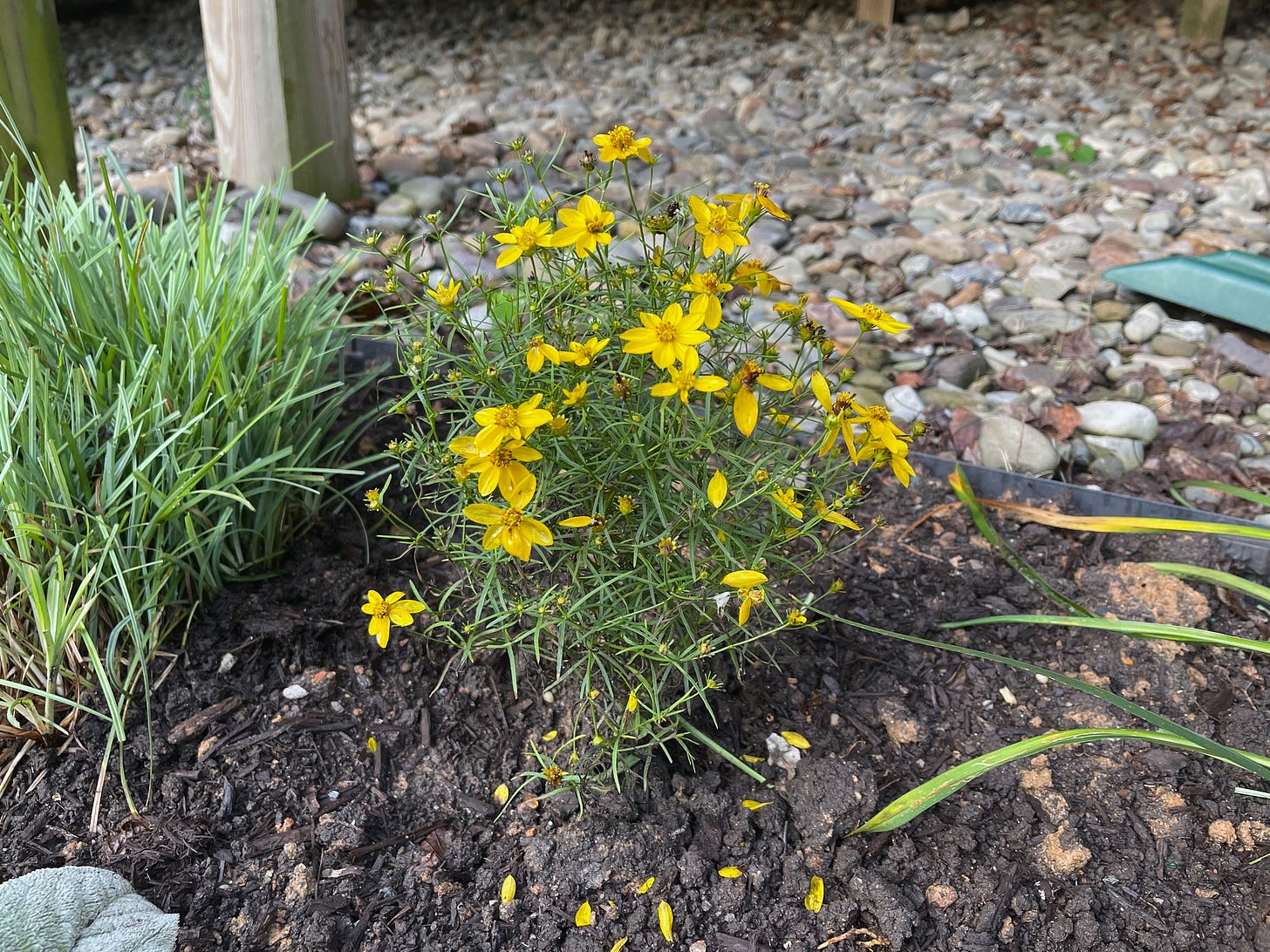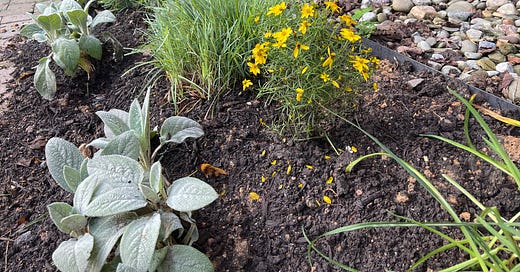The Empty Bed Ain’t Empty Anymore
Longtime readers of this newsletter have suffered through me whining and complaining about the empty flower bed next to my house. I’m pleased to report that the problem is finally resolved.
I wrote about my trials and tribulations trying to figure out how to plant this bed in a newsletter dated March 22 called “The Empty Bed.” I described in some detail how the bed gets partial shade and how I’m getting bored with the numerous plants in the garden that do well in partial shade, including hosta, coral bells, astilbe, toad lilies, brunnera, ferns, and more. Important note: Partial shade is an area that gets four hours of sun and the rest of the day is shade. Partial sun is an area that gets four hours of sun and then filtered sunlight through trees or shrubs for the rest of the day. The Empty Bed, nestled against the side of the house that faces east/northeast, is partial shade. It gets four hours of strong morning sun and then full shade as the sun passes over the house to the west. This distinction will become very important as the tale unfolds.

So how did I go from dithering over the plans for this bed to boldly planting it in the first week of August? It all began when my neighbor, Patty, asked me if I would like several purple irises from her garden as a complement to the yellow irises she gave me last year. One morning we were wandering through her backyard while I looked for specific guidance on exactly which irises I could take, when we passed plant after plant that caught my eye. Each had a beautiful, mounded shape and silver-blue color, with a soft velvety texture to the leaves. The plants are called lamb’s ear, and Patty, bless her heart, was willing to give me some of them. (You might recognize a theme here of Patty gifting me plants from her garden?)
About this time my wife, Linda, shared with me that she didn’t think the blue sedge grass we planted in her garden in front of the house were the right scale considering the size of the other plants. I had a brilliant idea. Wouldn’t the silver, icy-blue lamb’s ear plants look great next to the blueish color of the sedge grass in the Empty Bed? And just like that, I was off and running with the design for the Empty Bed. The blue sedge grass and lamb’s ear would be the main features of the bed, with highlights of yellow coreopsis and yellow day lilies to add some pop and color.


I installed the plants in one day, helped immensely by the rain that preceded Tropical Storm Debby. The rain did a great job of softening the ground and reducing the temperature to the low 80’s, making it possible to work in the garden in the afternoon. I amended the clay soil with compost to help promote drainage and give the transplanted plants a boost. I divided the lamb’s ear plants and the daylilies before planting them and trimmed and cleaned up the blue sedge plants transplanted from the front yard. The only plants I purchased were two Zagreb coreopsis, (also called tickseed), which have slender leaves and small, dainty yellow flowers. I paid $10.95 for each of the coreopsis plants so the total cost of the plant material for this bed was only $23 including tax. The rest of the plants were either gifted or transplants from our garden. Not bad.

The good news is that I love how the bed turned out. The colors work with each other -- blues and silvers from the sedge grass and the lamb’s ear complement the yellow coreopsis and daylilies. The plants have different textures, which is pleasing to the eye. And with luck, the daylilies and the coreopsis will bloom throughout the summer, creating color for most of the season. If I spaced the plants correctly, they will grow into each other, but not over each other, giving a pleasing cottage-style look to the bed. Best of all, lamb’s ear and coreopsis are deer resistant, so the only two plants I have to worry about are the daylilies and the sedge grass, although I haven’t had any trouble (yet) with deer eating the blue sedge in other beds.

Unfortunately, the whole design is based on flowers that are rated for sun, and the back bed is partial shade. Here’s where my horticultural genius (and terribly flawed thinking) comes into play. I have other beds in the garden where sun plants seem to be doing well in partial shade. If it turns out that there isn’t enough sun, I’ll simply move the plants to a sunnier part of the garden. It will take a season or two to see if I got this right.
I have other concerns. The lamb’s ear is often used as a ground cover and there isn’t a lot of room in the bed for it to spread out. Patty tells me it grows slowly enough that it is easy to trim back each year, but I’m nervous about it. The bed itself isn’t as big as I thought it was, or more accurately, the plants are more mature than I thought they would be, so it’s possible they will be growing into each other in only a season or two. Again, the bed isn’t so big that the maintenance should be a problem, but it’s on my mind. There is already enough maintenance to do in the garden, but fortunately, as I’ve written in the newsletter more than once, I’m retired and have little else to do.
I haven’t had a lot of success starting new plants in the late summer and fall, although planting late in the season presumably gives plants plenty of time to get established before winter arrives. We shall see. Growing season here ends around Halloween. I probably should have waited for spring, but once I had the plan in mind, this bed had to get installed. Sometime my “Type-A-ness” causes serious problems. Note: If you are a member of the Rotary Club of Columbia Patuxent Book Club, you can stop laughing now.
I hope you enjoyed the saga of the now Not Empty Bed. I’m not sure what to write about next week but I’m sure it will be fascinating. If you find this content worthwhile, please share this newsletter with people you know by clicking on the SHARE button or sending them a link to kensolow.substack.com. All of the past newsletter content can be found for free in the archives.




